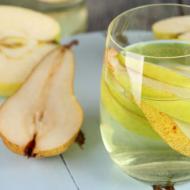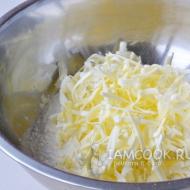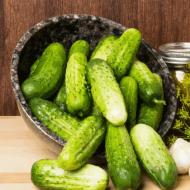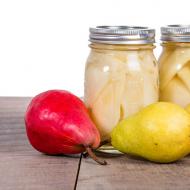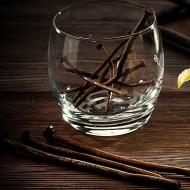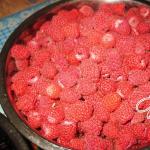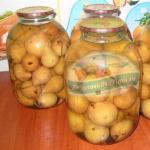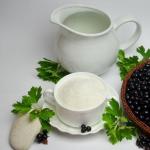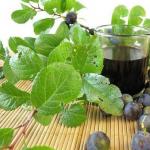
How to make moonshine. Moonshine for beginners at home
Let's talk about moonshine. How to make it, how and from what to cook mash for him.
Moonshine is a well-known alcoholic drink prepared at home.
I want to clarify right away that this article is not a call for alcoholism, but quite the opposite - primarily for those who do not abuse alcohol and who want to always have high-quality and tasty alcoholic drinks in their home stocks.
Before, it didn’t even occur to me to do moonshine, but I have a small garden in which apple trees, cherries, plums, several vines grow, and sometimes making jam from the entire crop just becomes inappropriate - they haven’t eaten last year yet.
I make homemade wines and so I decided to try to cook moonshine
I do not like this name "moonshine", I prefer to call it - a strong homemade alcoholic drink. The word "moonshine" I associate with a cloudy liquid, with a specific smell and Gaidai's film - "Moonshiners"
In this article I want to tell you how you can make wonderful, tasty and fragrant strong drinks at home, popularly referred to as "moonshine"
Law in Russia on moonshine (punishment for moonshine)
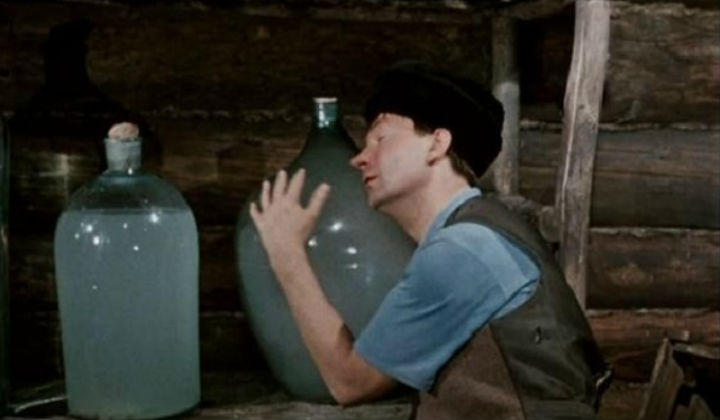
Today, if you make such drinks for personal use, you can safely do it.
No one will make claims to you if you use it personally, or decide to treat friends or acquaintances
But if you decide to earn extra money on this, then a lot of laws and by-laws will immediately fall on your head - ranging from illegal business activities to licensing the production of alcohol-containing liquids, which imply from administrative punishment (fines from 500 to 5000 rubles) to criminal ( from 300,000 rubles to a real term of imprisonment).
So prepare any delights for yourself, and it’s better to forget about business.
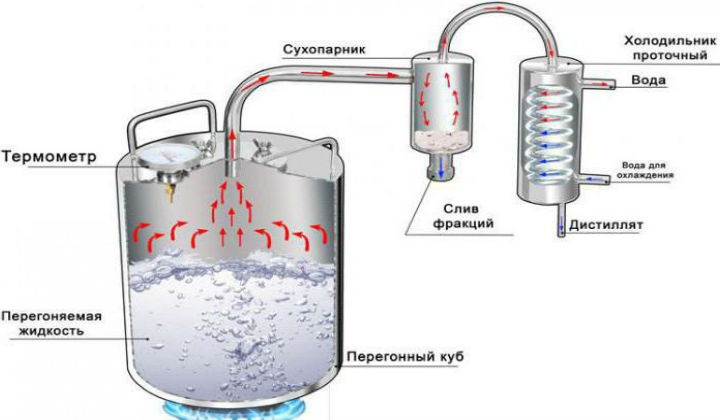
I want to give some advice for beginners in this field:
If you decide to seriously do this for real, tasty drinks - do not use homemade distillers.
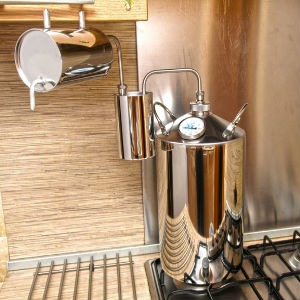 If it is not possible to make a high-quality and correct distiller, it is better to purchase it ready-made.
If it is not possible to make a high-quality and correct distiller, it is better to purchase it ready-made.
When choosing, pay attention to what material it is made of, food grade stainless steel is better, but the steamer connecting the tubes and the coil in the refrigerator should ideally be copper.
Keep in mind when choosing the volume of the apparatus, you need to fill it during distillation only by 2/3 of the volume, that is, if the apparatus is 12 liters, you can distill no more than 8 liters of mash at a time.
Please note that the device must have a built-in thermometer, this will greatly facilitate the cooking process for you.
To make mash, try to use juices of berries, fruits, jam - what gives the final product a taste, believe me, water, sugar, yeast - this is not the best option for making a delicious drink
Don't use bread yeast, use wine yeast as a last resort.
Be sure to purchase a hydrometer to measure the density of your wine material and an alcoholometer to measure the strength of your finished product.
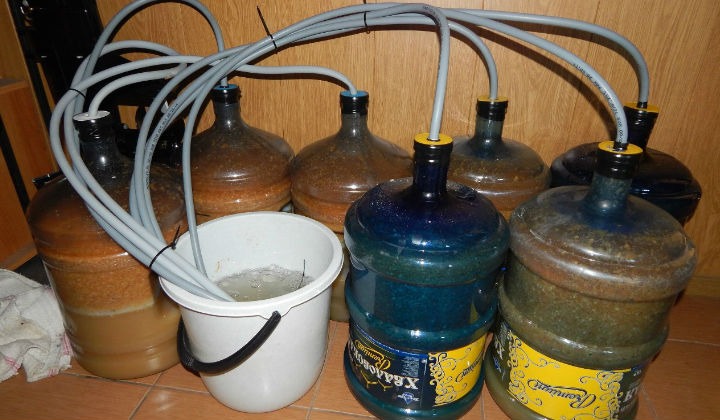
To make home brew, prepare a clean, food-safe container with a tight-fitting lid.
The volume of the container should be 1/3 more than the volume of the material you prepared
Prepare a water seal to remove carbon dioxide during the fermentation process, which can be purchased at the store ready-made and cut into the container lid, or use a hose and a can of water for this
moonshine recipe with berries
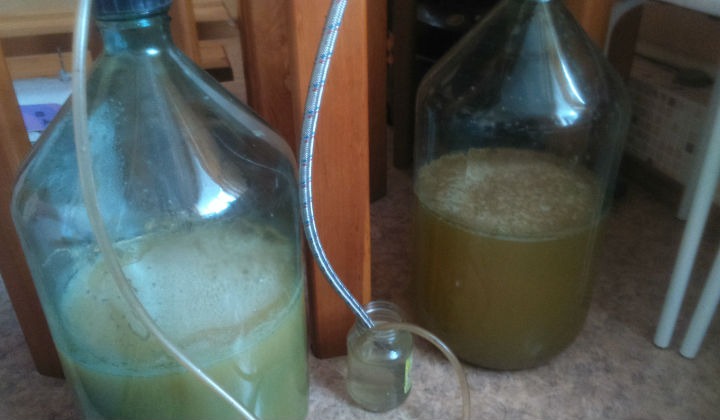
Consider two options for preparing the material using the example of a well-known and popular grape and a rather controversial berry - lemongrass.
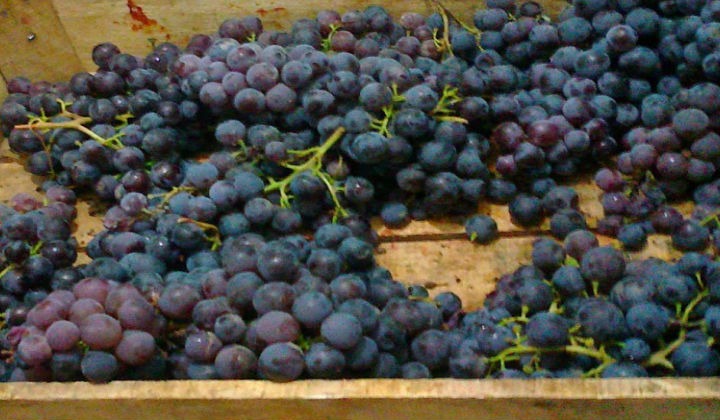
Grapes can be any - varietal, wine, wild.
It is desirable to collect it in dry weather, at least 3-4 days after rain, so that the formed yeast bacteria are not washed off on its surface.
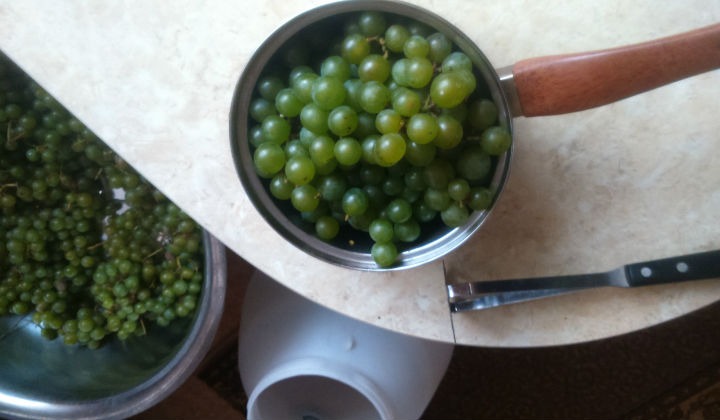
View all bunches of berries, remove rotten and spoiled
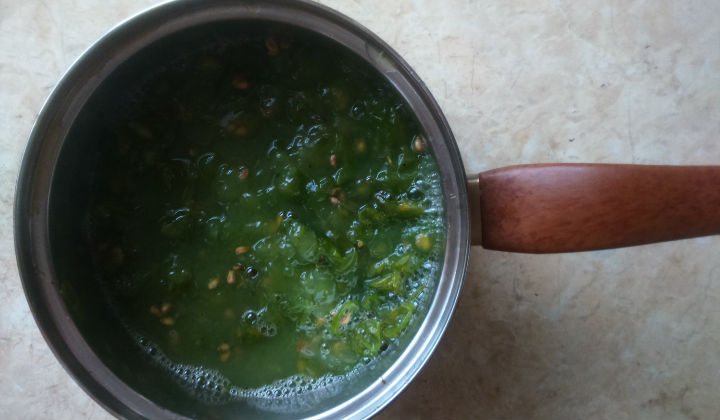
Since home-made volumes are usually not large, it is better to use a small saucepan, in which, in small portions, crush the grapes with a crush, and load them into a container.
After processing all the material, do not forget that 1/3 of the free space should remain in the container, cover the container with a clean towel and leave at room temperature for 3 to 5 days.
Every day, do not forget to mix your mass with a long wooden spoon, preferably 2 to 3 times.
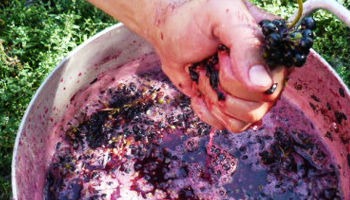
As you settle, the juice that stands out will be at the bottom of the container, and the entire cake will rise to the top in the form of a cap.
Through a colander and a layer of gauze, carefully pour the juice into the prepared glass bottle or fermentation container, squeeze the cake through several layers of gauze and put it back into the empty container.
The resulting juice is the juice of the first pressing, it is best to make wine from it, if such a task is not worth it, then it will make excellent cognac.
Pour water into a container with squeezed cake, exactly the same volume as the juice was drained
The whole procedure is repeated for 3 - 5 days, at the end you will get the juice of the second extraction, you can also get excellent, tasty wine or excellent whiskey from it.
After the second pressing, we also fill the cake with water, equal in volume to the drained juice and prepare the material for chacha, the technology is similar.
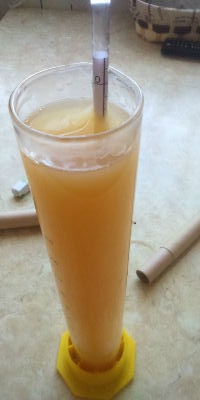 And so your juice is ready. If you decide not to make wine, but to use all the material for distillation, then decide, based on the amount of juice obtained, what you want to get in the end result - just strong alcohol or cognac, whiskey, chacha.
And so your juice is ready. If you decide not to make wine, but to use all the material for distillation, then decide, based on the amount of juice obtained, what you want to get in the end result - just strong alcohol or cognac, whiskey, chacha.
You can ferment each spin separately and then also distill separately, you can mix everything together and cook mash in one volume
Depending on the grape varieties, their sugar content, you need to add sugar, based on 10 liters of juice 2 - 2.5 kg of sugar, but it is better after the sugar has completely dissolved, measure the density of the material with a hydrometer, and add sugar if the density is below 20 – 25 mg/cm3, the higher the density before fermentation, the better. Be guided by the fact that the output of a strong drink will be approximately 1 liter from 1 kg of sugar or from 5 liters of mash.
Pour in wine yeast - you can buy them in specialized stores selling everything you need for winemaking and home brewing. There are shops like this in almost every city.
Fermentation is best done in a warm place, but I do not recommend putting it close to heating radiators.
Your mash will be cooked for 7-10 days, you will see the end of fermentation by the absence of bubbles in your water seal.
Braga fermented well, if its density, when ready, is 3-5 mg / cm3.
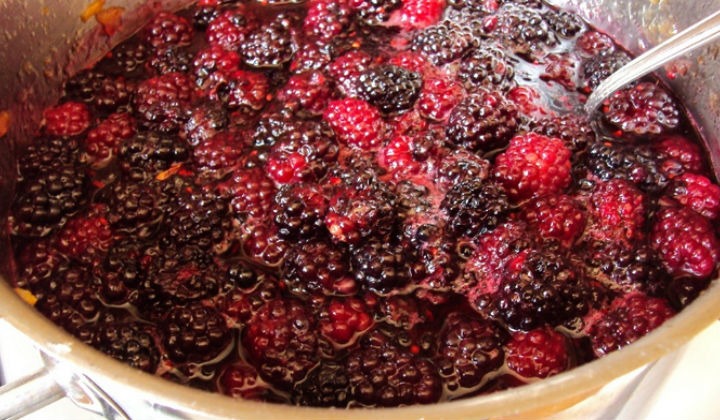
From lemongrass, as well as from other soft berries (raspberries, strawberries, honeysuckle), juice is best obtained with sugar.
Be sure to sort the berry and remove the rotten and spoiled.
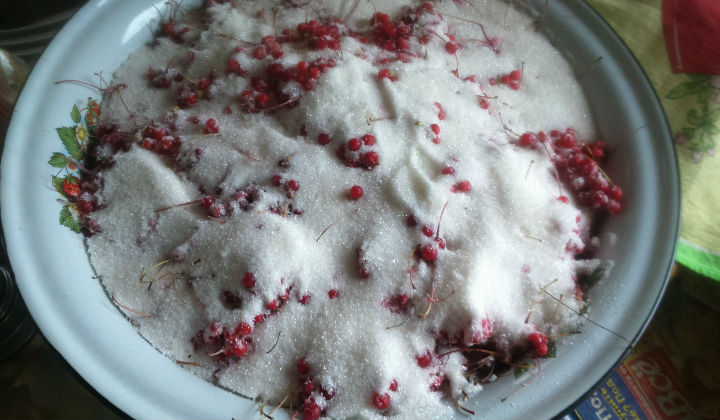
A berry is poured into a large basin and it must be covered with sugar, a thick layer, on top.
Cover with a towel and leave for 3-5 days.
Do not pour a full container, the released juice will lift the berry up.
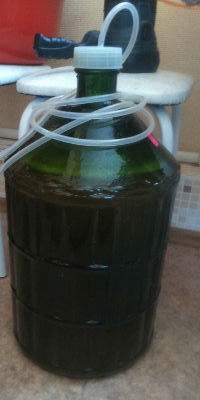 Carefully drain the juice from the container, and pour clean water into the berry remaining in the container, exactly as much as the juice was drained, the infusion procedure will also last up to 5 days.
Carefully drain the juice from the container, and pour clean water into the berry remaining in the container, exactly as much as the juice was drained, the infusion procedure will also last up to 5 days.
After a similar third procedure, draining the juice through gauze, squeeze the berry cake.
Keep in mind, a sour berry like lemongrass will require more sugar or the fermentation will be incomplete and slow.
In the same way, you can separate the juice and currants, but it is better to knead it before filling it with sugar.
The juice of the berries mixed with sugar is poured into a fermentation container, wine yeast is added (how many grams and how many liters of juice, as a rule, is indicated on the bags with yeast).
The container is tightly closed, a water seal is installed and placed in a warm place for 7 to 10 days.
Braga from jam for moonshine
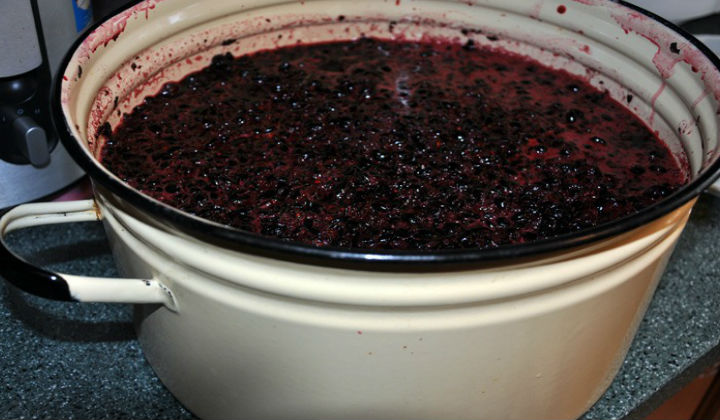
If you have left last year's jam, which you are no longer going to use for tea, an excellent material for making delicious strong drinks.
From practice - I do not divide the jam into varieties, but I pour everything that is available into one tank (do not forget that you only need to use containers suitable for food).
Fill with water - at the rate of 2 - 3 liters of water per 1 liter of jam and leave to infuse for 4 - 5 days, stirring the whole mass regularly.
Drain the resulting infusion through a colander, and the berries remaining from the jam can be poured with water again in the amount of half of the drained infusion, stand for 4-5 days and the drained second infusion can be combined with the first.
Determine the density with a hydrometer and, if it is less than desired, add sugar.
The rest of the fermentation process is described above.
How to make mash for moonshine from wheat without yeast at home
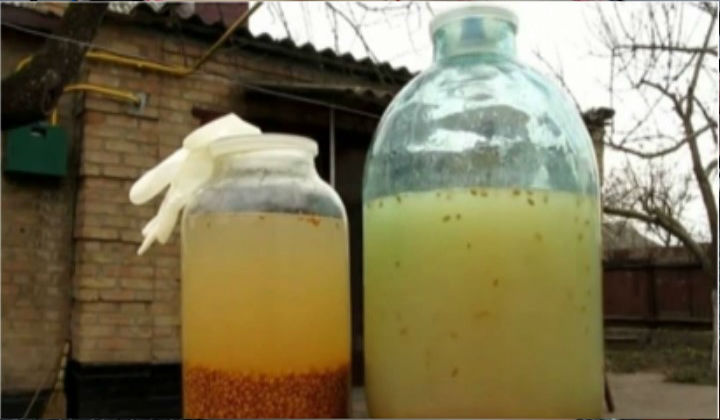
To prepare such a mash, based on 1 kg of pure wheat, you will need 1.5 kg of sugar and 7 liters of water
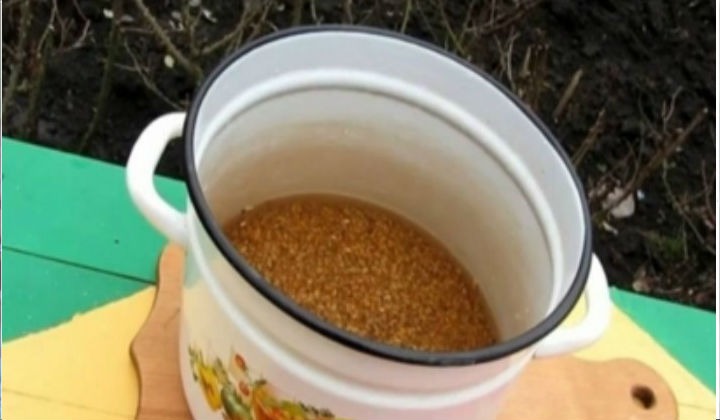
Pour the wheat into the pan and pour it with a sugar solution based on 1 liter of water, 200 g of sugar, pour it so that the sugar solution covers the wheat by 2-3 cm.
Cover the pot and place in a warm place for 3 to 4 days.
During this time, the wheat will ferment and foam.
Pour into an airtight container, add sugar and remaining water, install a water seal.
Stir the wheat periodically.
After 10 days, the fermentation process will end, the mash is ready.
In order to get a quality product from such a mash, you will most likely have to distill it 3-4 times.
Unscented moonshine recipe from sugar and yeast
I suggest you watch this video, which shows an experiment with different yeast for making mash and the whole step-by-step process, I think you will choose the best option for yourself.
How to drive moonshine at home
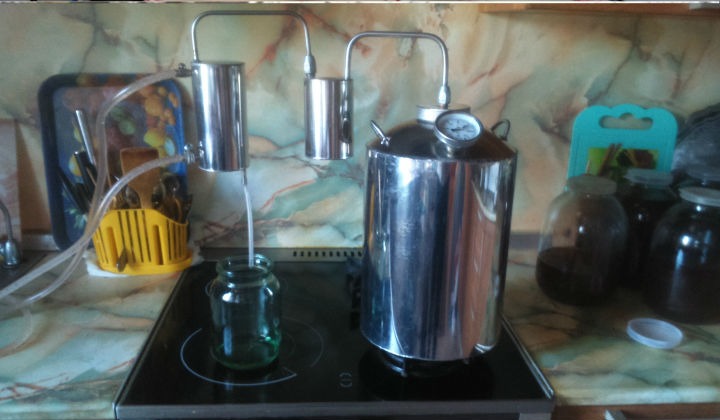
So, your mash is ready, it must be carefully drained, preferably through a soft thin hose into another container, it can be in three liter jars (this process is also called - remove from the sediment) and let it settle for a few more days. Before distillation, once again remove from the sediment.
- We prepare the distiller, wash it.
- Fill the mash by 2/3 of the volume, tightly tighten the lid and connect the steamer, then the refrigerator, to which cold water is supplied and drained, it is better that it is flowing.
- Place the machine on the stove over high heat.
- At a temperature of about 50 degrees, open cold water through the refrigerator in a thin stream.
- Substitute a clean jar to drain the product.
- The first drops will appear, which by 60 - 70 degrees will turn into a thin stream.
- The first 30 - 50 grams, you need to drain, you can a little more, these are the so-called "heads".
- In no case should you leave them, it is better to use them for technical needs.
- Among the people, the heads are also called "pervach". Sometimes you can hear - "here I grabbed the pervach, class."
- Pervach cannot be a class - it is pure acetone, smell the liquid of the first 50 grams, a strong smell of acetone.
- The heads are separated, reduce the heat to a minimum to stop the turbulent distillation process.
- Keeping the temperature between 65 - 85 degrees, adjust the fire so that the product comes out in slow drops.
- The strength of the product can be checked by filling a spoon with a few drops, set on fire, the flame will be red-blue.
- The volume of a strong product at the exit will be approximately 1 liter out of 5 liters of material poured.
- After your drink, when tested, stops igniting, the presence of alcohol can be determined by taste.
- I say right away that it is not recommended to take a sample during cooking, but you need to determine the presence of a fortress with a few drops on your tongue, you will feel the presence of alcohol by a slight burning sensation.
- If before that you took a sample in a larger amount, then it will be very problematic to determine the presence of alcohol from a few drops.
- You have determined that the presence of alcohol in the resulting product is minimal or absent.
- Put new dishes under the exit and continue driving, then you will have the so-called "tails".
- You will need them in order to dilute the resulting product to the strength you need.
- In this case, the temperature will gradually begin to rise until boiling.
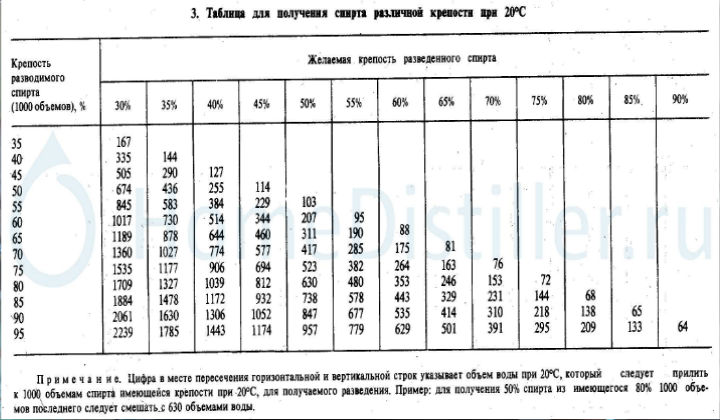
Having collected a small number of tails (how many of them you need, determine by measuring the strength of the resulting main product, with an alcohol meter), turn off the fire, finish this lesson, if you still have material for distillation, and you decide to continue the process further, you need to refill the distiller with a new portion of mash .
At the same time, be sure to work in thick gloves so as not to burn yourself, be sure to disconnect and drain the liquid from the steamer, all fusel and essential oils remain in the dryer, rinse it.
The finished product to the required strength must be diluted with tails and left to cool.
For cognac, the fortress is within 40 degrees, whiskey is a little more than 45 - 50 gr., If you plan to make tinctures, liqueurs, you can use a little less than 40 gr.
Even at this stage, a drink made from juices, jams, turns out to be tasty, aromatic and practically odorless of fusel oils, which does not require re-distillation.
You can then pass it through a charcoal filter, add 2-3 teaspoons of oak chips or 3-4 pieces of prunes to a 3-liter jar and send it to a dark place to infuse.
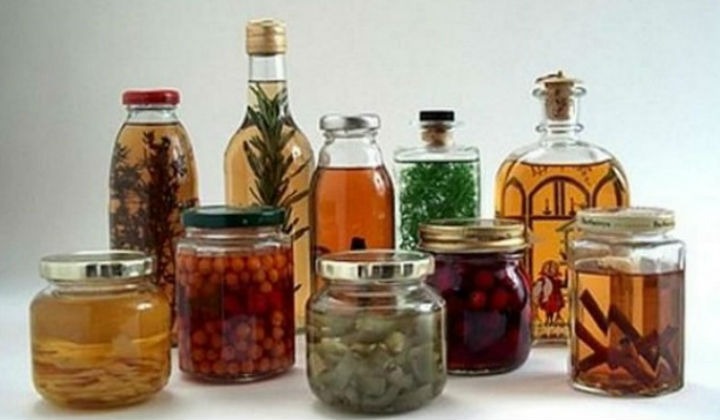
I assure you, everyone will like such drinks very much, even those who do not drink strong drinks.

